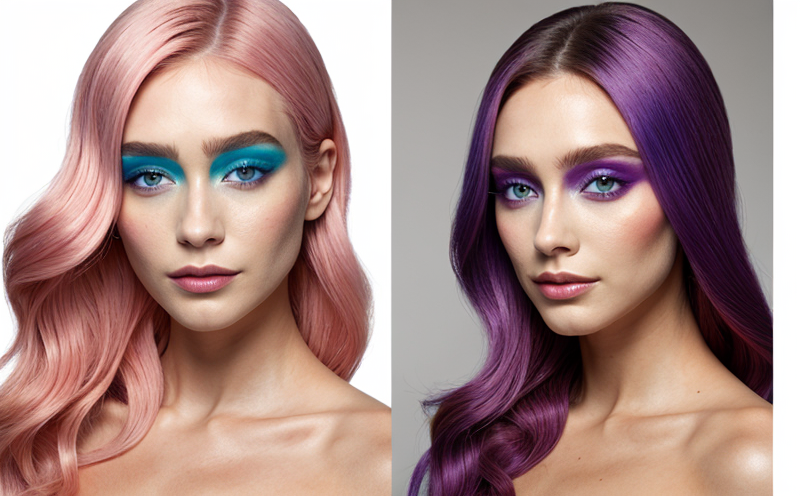Light Stability Testing of Pigmented Cosmetics
In the realm of cosmetics testing, ensuring product quality and safety is paramount. Light stability testing specifically examines how pigmented cosmetic products retain their appearance under exposure to light. This service is crucial for manufacturers aiming to deliver consistent color performance across various environmental conditions.
Light stability testing involves subjecting samples to controlled light sources that simulate the effects of natural sunlight, artificial light sources like halogen lamps or xenon arc lamps, and UV light. The goal is to determine how well these products withstand exposure to light without experiencing significant color change, fading, or degradation.
The process begins with selecting appropriate specimen preparation techniques tailored to each product type. This might include grinding powders into fine particles for better light interaction, preparing emulsions in specific ratios, and ensuring that the sample is homogeneous before testing.
Once prepared, samples are subjected to accelerated aging using spectrophotometric instruments capable of measuring color changes accurately. These devices provide precise readings on color parameters such as L*, a*, b*, E* (CIE), and CIELAB values. The test conditions closely mimic real-world scenarios but accelerate the process exponentially.
During testing, it’s essential to monitor temperature, humidity, and light intensity levels meticulously. This ensures that results are consistent with industry standards such as ISO 1765-2020 and ASTM D4585. By adhering strictly to these guidelines, laboratories can provide reliable data that helps brands make informed decisions about their formulations.
After completing the test cycle, analysts compare pre-test and post-test results using statistical methods like ANOVA (Analysis of Variance) or t-tests. This evaluation helps quantify any changes in color parameters over time due to light exposure. If necessary, additional tests may be conducted under different lighting conditions or at varying temperatures to assess broader compatibility.
Light stability testing plays a vital role in ensuring product longevity and meeting regulatory requirements worldwide. Regulatory bodies like the FDA (Food & Drug Administration) require cosmetic companies to demonstrate that their products remain stable throughout their shelf life, especially when exposed to environmental factors such as sunlight or artificial lighting.
Why It Matters
Color stability is critical for maintaining brand identity and customer satisfaction. Consumers expect cosmetic products to maintain their original color throughout use, which means manufacturers must ensure that pigmented cosmetics retain their visual appeal even after prolonged exposure to light.
From a regulatory perspective, complying with international standards ensures that companies can market their products globally without facing compliance issues. Non-compliance could lead to product recalls, fines, or damage to brand reputation. Additionally, meeting these standards demonstrates commitment to quality and consumer safety.
For R&D teams, light stability testing provides valuable insights into formulation modifications needed for enhanced performance. Understanding how different ingredients interact with light allows researchers to develop more resilient formulas that can withstand harsher environmental conditions without compromising on effectiveness or aesthetics.
Benefits
- Enhanced Product Quality: Ensures consistent color performance across all batches, enhancing brand reputation and customer trust.
- Regulatory Compliance: Helps manufacturers meet stringent international standards and avoid potential legal issues.
- Innovation Opportunities: Provides data on which ingredients contribute positively or negatively to light stability, driving innovation in formulation design.
- Cost Efficiency: By identifying unstable products early in the development process, companies can minimize resource wastage and avoid costly rework later down the line.
Competitive Advantage and Market Impact
Companies that invest in thorough light stability testing gain significant advantages over competitors. They produce more reliable products, reducing the risk of customer dissatisfaction or returns. Moreover, consistent product quality can enhance brand loyalty among consumers.
- Market Leadership: Leading brands often set higher standards for themselves, including rigorous internal testing procedures. This approach not only improves their offerings but also sets a benchmark for others to follow.
- Differentiation: Offering superior quality products distinguishes companies from competitors and can attract premium pricing strategies.
- Innovation: Continuous improvement in light stability testing fosters ongoing innovation, leading to new product developments that better meet consumer needs.





